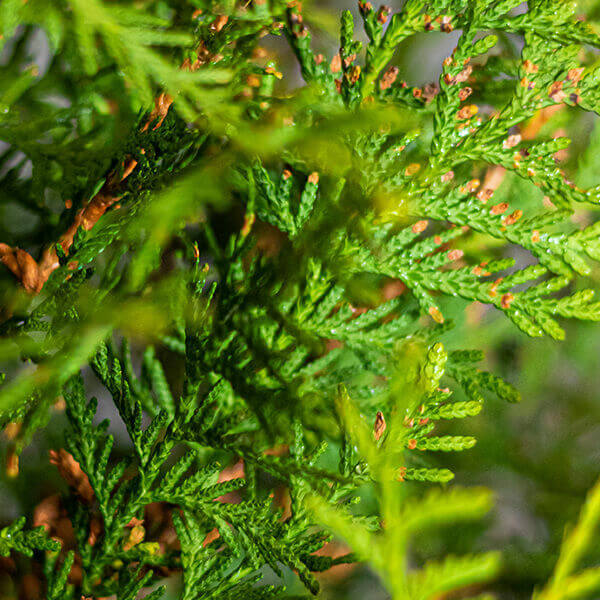Hedge Plants For Dense Screening
Boost your garden's allure with lavish hedge ranges such as Yew (Taxus), Thuja, Laurel, Photinia, and Bamboo, celebrated for their structural integrity and ecological advantages.
Yew and Thuja offer evergreen protection and winter durability, while Laurel uses rapid development and broad, aromatic leaves.
Photinia adds seasonal beauty with its lively red foliage, and Bamboo lends a low-maintenance, peaceful ambiance.
These hedges improve air quality, lower noise, and create tranquil, personal areas.
Proper planting, spacing, and maintenance guarantee energetic development and ecological consistency.
Check out how these lush varieties can raise your garden's appeal and wellness.
Key Takeaways
Transform Your Garden With Lush Hedge Varieties
- Select Yew for its dense, evergreen development and unequaled longevity.
- Select Laurel for its fast development and broad leaves, ensuring quick privacy.
- Select Photinia for its lively seasonal foliage, which turns a striking dark red.
- Make use of Bamboo for a low-maintenance, winter-hardy hedge with visual appeal.
- Area plants 2-3 per meter and prune regularly for optimal growth and health.
Popular Hedge Plants
When transforming a garden with rich hedge varieties, it's important to consider popular hedge plants such as Yew, Thuja, Laurel, and Photinia due to their special characteristics and benefits.
Yew (Taxus) is highly esteemed for its longevity and thick, green development, making it a prime choice for enduring landscapes.
Thuja is kept in mind for its evergreen foliage and robust winter season strength.
Photinia includes seasonal vibrancy with red leaves that darken with time, developing vibrant visual appeal.
Laurel provides fast growth and fragrant, broad leaves, perfect for fast personal privacy.
Furthermore, Bamboo is an exceptional option for ambiance, offering a low-maintenance, winter-hardy alternative that boosts the garden's visual with its stylish, swaying walking canes.
These selections cater to a variety of horticultural requirements and choices.
Benefits of Garden Hedges
Garden hedges use a plethora of advantages, making them a valuable addition to any landscape. These natural barriers are cost-effective to carry out and offer significant wind defense, boosting air flow and contributing to sound reduction. The thick foliage of hedges like Thuja and Beech guarantees privacy by blocking visibility, developing a peaceful and secluded environment.
Hedges also play an essential function in microclimate policy, providing a steady environment that fosters plant development and minimizes temperature level fluctuations. Their detailed leaf structures filter pollutants, enhancing air quality and contributing to a much healthier garden ecosystem.
Furthermore, hedges master noise decrease, absorbing and deflecting acoustic waves to lower ambient noise levels. This dual performance of providing both acoustic and visual privacy improves the total tranquility and visual appeal of any garden.
Planting and Upkeep Tips
For a successful hedge, precise preparation of the planting location is essential. Guarantee the soil has correct pH and drainage to support strong root advancement.
Area the plants properly for the chosen types. Water the hedge often during its preliminary growth phase, adjusting as needed with seasonal changes.
Carry out a organized pest control and disease avoidance method, utilizing organic or chemical treatments when required. Frequently check for aphids, termites, and fungal infections.
Apply mulch to retain moisture and suppress weeds. Seasonal pruning promotes dense growth and air flow, vital for plant health.
Following these standards will assist you cultivate a lively, well-maintained hedge that enhances the beauty of your garden.
Spacing and Cutting Standards
Spacing and Cutting Standards
Correct spacing and cutting are crucial for cultivating healthy, visually appealing hedges. Adequate spacing makes sure each plant receives adequate nutrients, light, and airflow.
Follow these guidelines for ideal hedge upkeep:
- Spacing: Position hedge plants 2-3 plants per meter to motivate robust development.
- Pruning Strategies: Routine pruning is necessary for keeping desired hedge height and shape. Trim brand-new development in summertime and cut down older wood during winter.
- Seasonal Care: Adjust cutting methods and schedules according to seasonal requirements to ensure plant health.
- Hedge Height: Regularly monitor and cut to keep the preferred hedge height and achieve uniform aesthetics.
Sticking to these steps will guarantee your hedge grows, improving both the appeal and functionality of your garden.
Choosing the Right Hedge
Picking the Right Hedge
Choosing the appropriate hedge includes assessing factors such as fully grown height, foliage density, and environmental strength. Effective hedge plant selection needs understanding each species' development qualities and site-specific adaptability.
For instance, Yew (Taxus) offers exceptional longevity and thick growth, while Thuja is significant for its winter strength. In addition, thinking about maintenance requirements is important; fast-growing types like Laurel or Privet need regular trimming, whereas low-maintenance alternatives like Bamboo or Ivy may be more suitable for those seeking minimal upkeep.
Ecological elements such as soil type, light schedule, and moisture conditions must likewise direct the selection procedure. This careful technique ensures the picked hedges will thrive, offering both practical and aesthetic advantages to the garden landscape.
Delivery and Planting Recommendations
To ensure your hedge plants prosper, they should be delivered by specialized couriers and planted without delay upon arrival.
Follow these essential steps for effective planting:
- Soil Preparation: Enrich the soil with natural matter to enhance drain and nutrient content.
- Planting Depth: Produce a trench two times the width and equivalent to the depth of the root ball.
- Watering Strategies: Water completely after planting, keeping the soil consistently damp however not filled.
- Mulching: Apply a layer of mulch to retain moisture and suppress weeds.
Client Assistance and Service
Offered the crucial role of timely assistance in horticultural pursuits, our client support team is offered 6 days a week through telephone, e-mail, and social media to use expert guidance and quickly deal with any issues. Their devotion to fast action times makes sure consumer fulfillment by solving questions related to plant health, optimum planting approaches, and upkeep schedules.

Browse around this site -------------------
Telephone
Six days a week
This comprehensive support group, strengthened by an excellent 9.3/ 10 consumer rating, highlights our commitment to enhancing the gardening experience for each client.
Frequently Asked Concerns
How Long Does It Consider Hedge Plants to Develop?
Hedge plants generally need one to 3 years to become fully established, with the exact duration differing by types and growing conditions.
Effective care throughout this critical period is vital for robust growth. Constant watering, watchful weed control, and suitable fertilizer application are critical in promoting strong root development.
For example, fast-growing species like Laurel may establish more quickly, while slower-growing varieties such as Yew may take longer. Thorough upkeep accelerates the facility procedure, resulting in dense and healthy hedges.
What Are the Best Hedge Plants for Privacy?
The concern of the very best hedge plants for privacy includes evaluating evergreen and deciduous alternatives.
Evergreen hedges like Thuja, Laurel, and Cypress offer year-round coverage, ensuring constant personal privacy.
In contrast, deciduous hedges such as Beech use seasonal privacy, shedding leaves in cooler months.
Key upkeep tips for personal privacy hedges consist of routine cutting, fertilizing in spring, and proper spacing-- normally 2 to 3 plants per meter.
Furthermore, consistent watering and thorough weed removal are important for promoting healthy, thick development.
Can Hedge Plants Attract Wildlife to My Garden?
Yes, hedge plants can bring in wildlife to your garden by offering vital benefits like shelter, food, and nesting websites, consequently improving local biodiversity. For example, yew, holly, and laurel are exceptional for attracting birds, while ivy supports a range of bugs.
Nevertheless, it is very important to keep in mind that there are some drawbacks, such as increased maintenance to handle pests and routine maintenance. Carefully selecting and keeping hedge varieties can assist stabilize these benefits and downsides, eventually cultivating a dynamic and sustainable ecosystem in your garden.
Are There Any Blooming Hedge Plants Available?
Yes, there are flowering hedge plants available that can improve the appeal of your garden.
For example, Elaeagnus, also referred to as Olive Willow, produces aromatic white flowers in the fall, adding a touch of beauty.
Photinia, another popular choice, showcases dynamic red leaves that grow into an abundant green, producing a vibrant visual result throughout the seasons.
To ensure these plants grow, it's important to practice proper pruning methods and seasonal maintenance, such as cutting brand-new development in the summer season and cutting back in the winter.
These measures will help preserve the health and aesthetic appeal of your blooming hedges.
How Do I Avoid Insects in My Hedge Plants?
To prevent pests in hedge plants, employ natural insect control methods and preserve appropriate hedge care. Present useful pests like ladybugs, which victimize damaging bugs, to produce a balanced community.
Routinely examine your hedges for signs of invasion and immediately eliminate any afflicted parts to avoid the spread. Ensure the health of your hedges by applying balanced fertilizers and supplying appropriate water.
Make use of mulching to keep soil moisture and proper spacing to reduce plant tension and promote robust development. These practices jointly help in minimizing bug concerns and preserving a healthy hedge.
Conclusion
In essence, selecting the right hedge ranges such as Yew, Thuja, and Laurel can change any garden into a peaceful sanctuary. These plants offer year-round greenery, enhance visual appeal, and offer useful advantages like noise decrease and wind security.
Proper planting strategies, accurate spacing, consistent watering, and seasonal cutting are crucial for optimum growth.
Reputable delivery services and professional customer assistance ensure a smooth experience from purchase to planting, making it simpler than ever to raise your outdoor area.
Garden hedges provide a multitude of advantages, making them a valuable addition to any landscape. These natural barriers are economical to implement and offer significant wind security, enhancing air flow and contributing to sound reduction. The thick foliage of hedges like Thuja and Beech ensures personal privacy by blocking exposure, developing a remote and serene environment.

Pruning Methods: Regular pruning is essential for keeping wanted hedge height and shape. Trim brand-new development in summer and cut back older wood throughout winter season.
 Danny Tamberelli Then & Now!
Danny Tamberelli Then & Now! Tia Carrere Then & Now!
Tia Carrere Then & Now! Marques Houston Then & Now!
Marques Houston Then & Now! Jeri Ryan Then & Now!
Jeri Ryan Then & Now! Mike Smith Then & Now!
Mike Smith Then & Now!